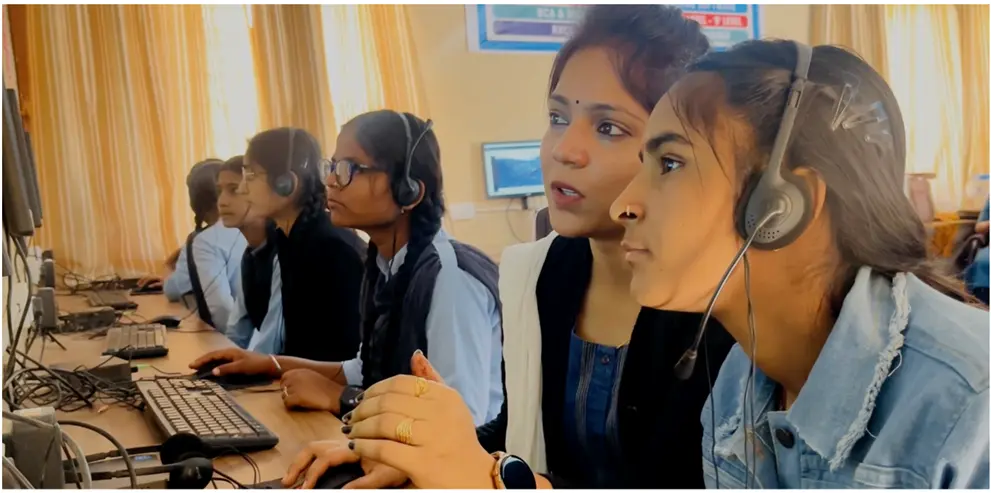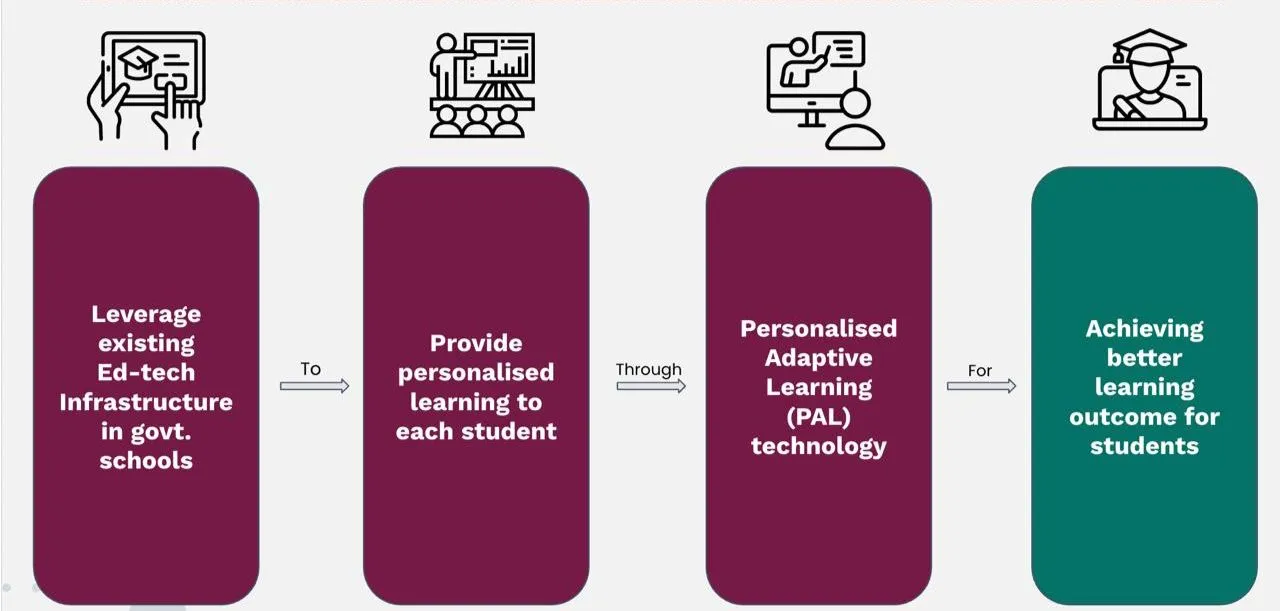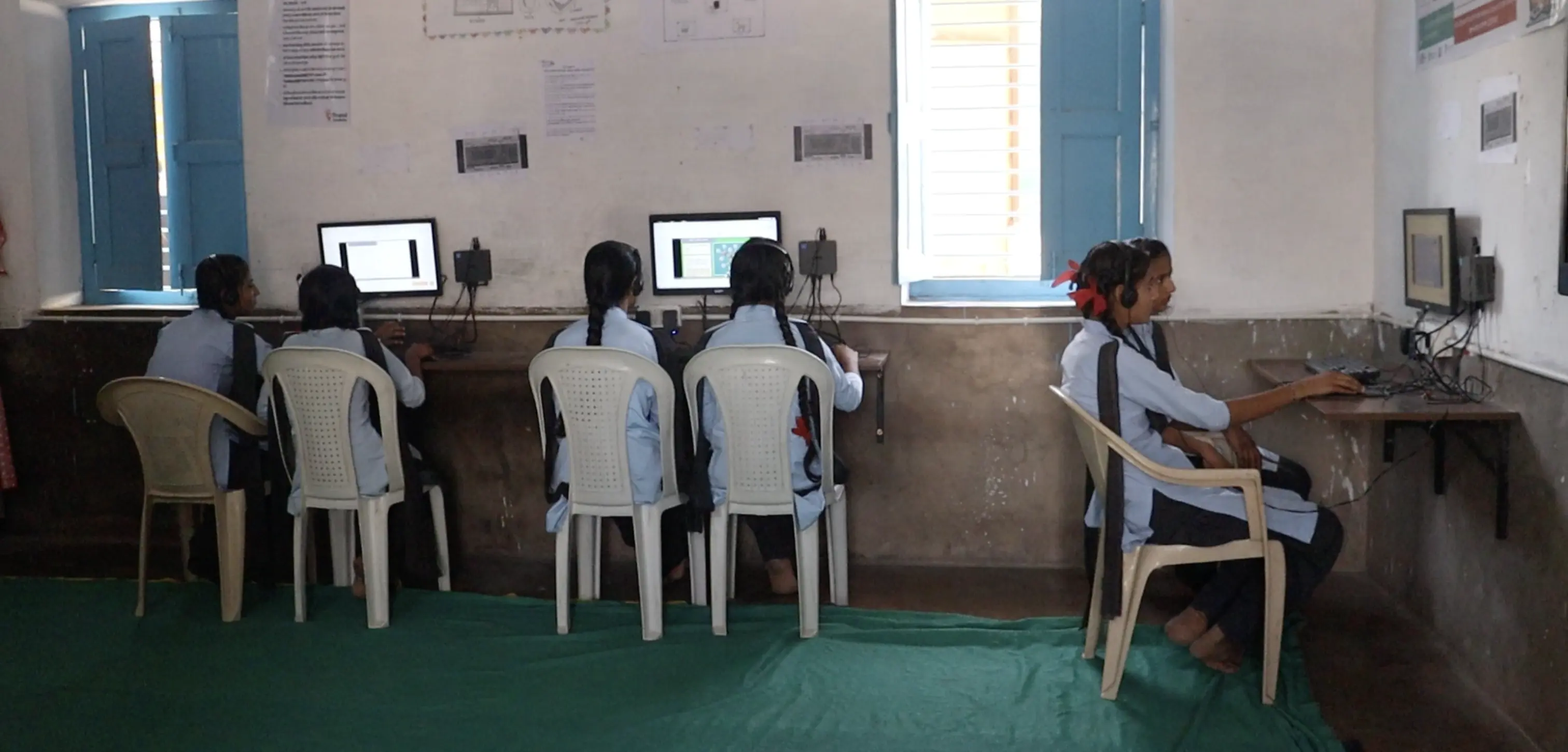"Bacche pehle computer mouse ko haath lagaate darte the", (children used to be scared of even holding the computer mouse earlier), informed Ms. Rekha Meena, a Basic Computer Instructor (BCI) in-charge at a government school in a nondescript village in Madh block of Bikaner. She had been working in the school as the BCI-incharge for some years now and it was not until very recently that she had seen the successful adoption of technology as a learning tool by students. “Yeh Mission Buniyaad se sambhav hua, aap logon ka dhanyawad”, (this has been made possible because of Mission Buniyaad, thank you all), she thanked us with a proud smile for changing the lives of the students and helping them become more confident in using digital devices like computers for subject learning.

Mission Buniyaad is India’s largest Personalised Adaptive Learning (PAL) based program that has provided personalised learning to students using the existing Information and Communication Technology Lab (ICT) infrastructure in schools. The programme, led by the Government of Rajasthan and supported by a consortium of civil society organizations, is being implemented in all districts of Rajasthan and has improved learning outcomes for around ~4 lakh government school students.
I started working on Mission Buniyaad in July, 2024 and have been a part of the program’s strategy development and monitoring team. Working on MB (as we fondly call it) has involved a lot of passion and dedication from all the program partners in bridging about quality education for the students and all these months, the celebratory occasions for the program’s successes have been informed by the achieved targets and the numbered KPIs - a learning improvement gain of 23%, overachieving PAL usage hours target by 1 lakh hours, etc. - all these numbers do bring a positive picture to the light and tell us the manner in which the program translated into the lives of the students of Rajasthan.
In the social impact world, we are taught to always measure the quantifiable impact of a programme through different KPIs, dashboards, Excel and Google Sheets, etc. and try to chase measurable targets to achieve measurable objectives. However, my conversation with Ms. Rekha intrigued and surprised me. While the above ‘data-driven’ approach allows an organised way to ensure that everything is on track, it often tends to overlook the other side of impact of any intervention; the qualitative side of things, the parameters that cease to remain with the beneficiaries on-ground, the unheard human stories that swell with pride and positive change. Stories that can only be heard and not measured in data.
Interestingly, this also takes me back to my first conversation with a teammate a few days after I had just joined MB, “Is social impact actually possible? How are we so certain that the numbers translate to an actual change?” I had eagerly and arrogantly asked them. To which the response came, “Ek din me duniya nahi badalti, systemic level par jab change hota hai, tab pata chalta hai ke impact ho raha hai”, (the world does not change overnight, it is when things change in the system, you know there is an impact).
The answer did not settle well with me then and perhaps I did not even understand it completely. But now, 11 months, innumerable review meetings and a few field visits later, I now realise what it means to have an impact at the systematic level and more importantly how significant it is in shaping the future of the people that we work for. To put it simply, change at the systematic level means a change of the outlook in seeing a certain problem, enabling a new solution to solve it and trusting this process meanwhile.
I believe it is safe for me to say that this is exactly what happened in Mission Buniyaad. It was obviously the hard work, dedication and team effort of the program partners that drove the program to its successful inception and implementation. But it was also the larger trust, aspiration and zeal of government officials and the teachers and students in Rajasthan, who did not hesitate in imbibing technology as an integral part of in-school learning and welcomed it with open arms. This paved the way for laying the foundation of a complementary learning model in the state, where the computer did not replace the classic old way of teaching, but adorned it as an additional ‘cherry on top’ with PAL based technology.

With Mission Buniyaad, digital education has become a regular agenda item on the officials’ list in the education department at Rajasthan and continues to shape the future of government school children there. It has become a model for other Indian states in implementing an ed-tech based PAL program at scale and is evolving sustainably in providing quality education.
“Yeh program aap Nagaur ke baaki blocks mein bhi lekar aaiye”, (Please bring this program in the remaining blocks of Nagaur as-well), I fondly recall Mr. Arun Kumar Purohit, District Magistrate, Nagaur, saying this in his office during one of my field visits there. It had brought a smile to my face and to the faces of three other stakeholders that work on ground. ‘This is impact’ I had thought.
